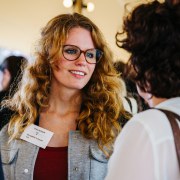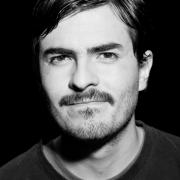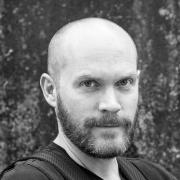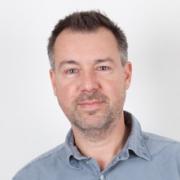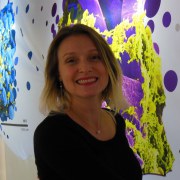(R)evolution of museum exhibitions
“If museum exhibitions are to survive the major irreversible social changes brought on by technological advances, globalisation, and shifting consumer expectations, we will need to radically evolve our practices over the coming years.” -Kathleen McLean, principal of Independent Exhibitions.
This session invites museum professionals and exhibition developers who are passionate about revolutionising exhibitions. Together we will push the limits of media and technology, visitor participation, empowerment and much more. We will explore the perspective of both exhibition design studios as well as science centres. After hearing the speakers’ own (r)evolution perspectives, there will be a world café session where small groups will come up with challenges and opportunities for driving change in their own institutions.
Facilitator
PhD-Researcher & Lecturer Media Studies | Mediatised Experiences in Heritage
Amsterdam University of Applied Sciences
Session speakers
At the innovation department, we deploy our collective creativity to turn ideas into experiences, build shared visions, inspire and ignite change and generate new exhibition opportunities at our institution. In 2016 we started a “museographic revolution” initiative, grounded on a manifesto, that set the stage for novel explorations based on prototyping, exhibition hacking, participatory design, and transmedia storytelling. Jose will discuss the challenges and opportunities to strategically manage change (technological, organizational, educational, operational) within a Science Center.
Senior Graphic Designer | Project Manager
Whether we like it or not, the science centre exhibitions are competing to visitors' attention with billion-dollar industries like games, apps and home entertainment. To adapt, Joonas’s team has been re-thinking Heureka’s exhibition development process, finding the strong points and building the forthcoming exhibition of Natural Disasters and Resilience with a design-driven approach, re-invented toolset and in close collaboration with recognized video-mapping artists, on-site disaster workers, resilience scientists, and on-line journalists. Joonas will talk about the design process, marketing value and customer satisfaction and give a sneak-peak of the immersive spaces of the exhibition-in-progress.
Our industry, our technology and even our designers are ready for fast, radical new ideas. It's all there - anything is possible. But you have to be prepared and open for new experiences. You have to be prepared to incorporate the aspect of innovation into the concept process and for long-term planning right from the beginning. And you have to accept risks. As designer and architect, Gunnar will bring his experience and his vision to the podium how to find innovative solutions that are not ending at conceptual level. He can give a framework to ensure that stakeholder expectations can be fulfilled and disruptive concepts can be transformed into real products at the end of design processes.
Participatory design with future audiences can be an interesting path to create more diverse science centre experiences. Creative design thinking panels and audience testing are quite common in commercial product development and marketing campaigns, but we seldom see them as part of our design process in the science center world. Agile development (create ideas and develop them in prototypes, test and revise) however have been successful methods in the science center field and have been the basis of exhibit development in the early days of the science centre files, like the exhibit development process in the Exploratorium. We work with clients who really embrace this method of working, which leads to many innovative exhibits ideas.
We have created an exhibition for children from 2 to 7 years old: Cabanes (cité des sciences et de l'industrie). Our initial idea was to work differently, wishing on the one hand to feel more enthusiasm in the way we work and on the other hand to offer something else to our young visitors. The result is that our exhibition has been conceived differently ( co-conception with adults and children, production, team involvement...) and proposes a different offer than what we usually do (no screen, no labels, more creativity....) We could reformulate our experience as follows: how working differently gives different results (or not)?
Creative Director & Director of Creative Technology
New York City
United States
Eric directs the Creative Technology Department, and as Creative Director he focuses on designing intuitive and tangible interfaces around complex subjects. His recent projects include interactive installations for The Cleveland Museum of Art, the Noticing Tools suite of learning apps for the New York Hall of Science, and the Body Metrics and BioDesign Studio permanent exhibitions at the Tech Museum of Innovation. Prior to joining Local Projects, Eric co-founded Plural Design in Chicago and developed interactive installations for a range of clients and contexts, including Eyebeam, Wired, and artist Anthony McCall. Eric holds an MPS from NYU’s Interactive Telecommunications Program and a BS from Northwestern.

